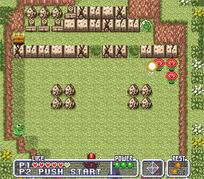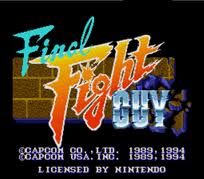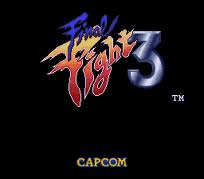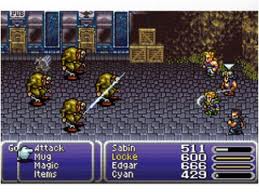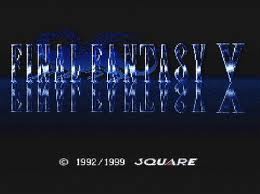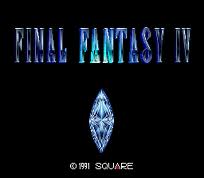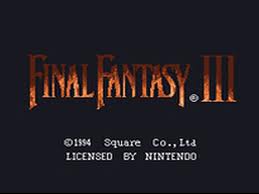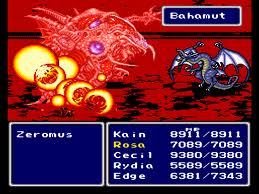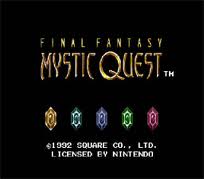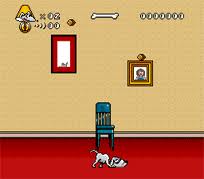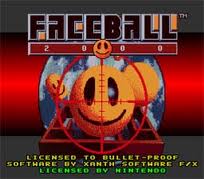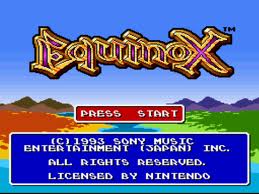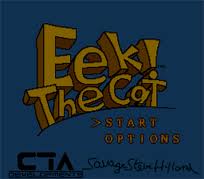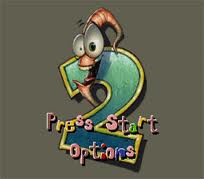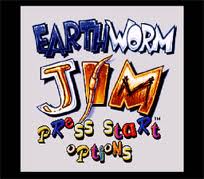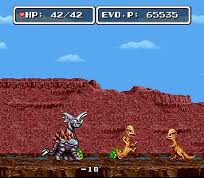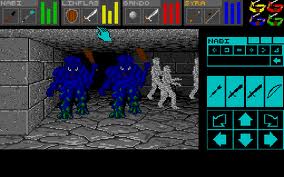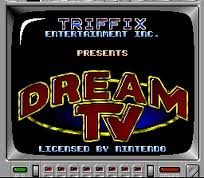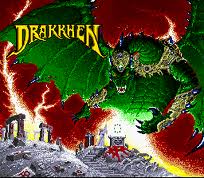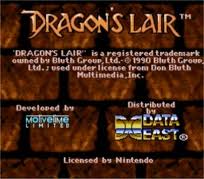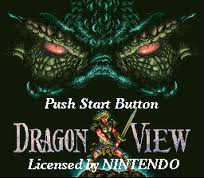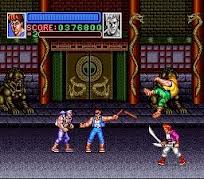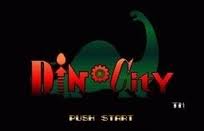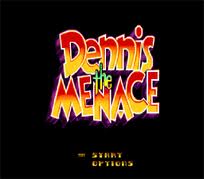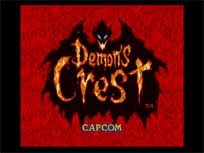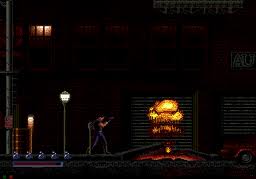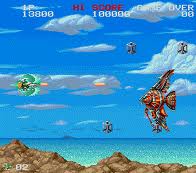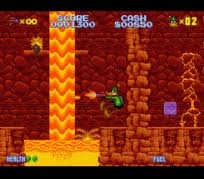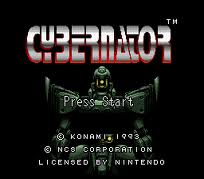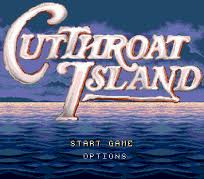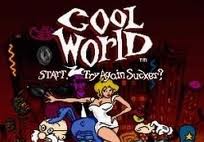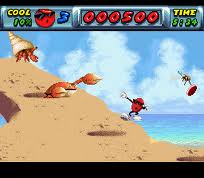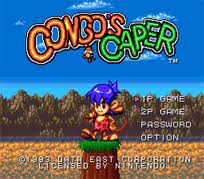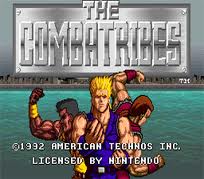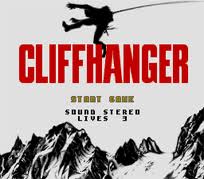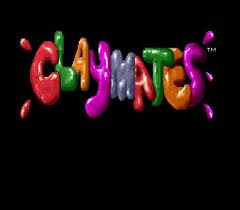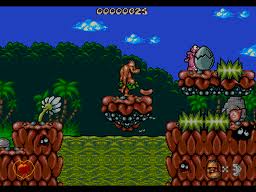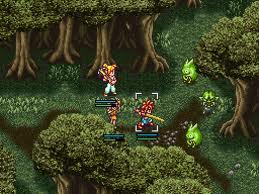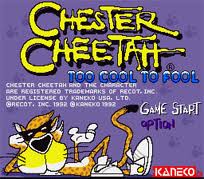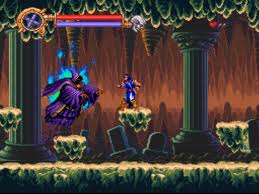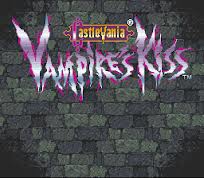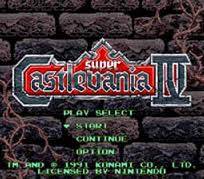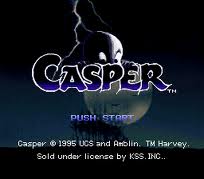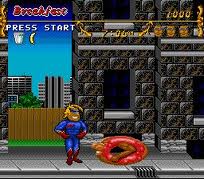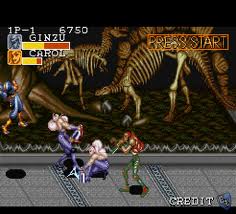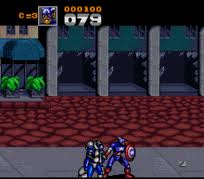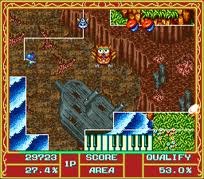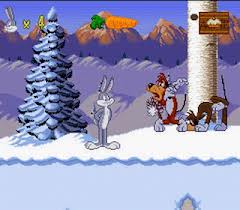Category: Adventure
502 game(s)All Adventure Games for SNES
Firestriker
Firestriker (ホーリーストライカー?, lit. "Holy Striker") is an overhead view action video game that was released on December 17, 1993 in Japan and on October 1994 in North America exclusively for the Super Nintendo Entertainment System.
Final Fight Guy
Guy (ガイ Gai?) is a video game character who first appeared in the 1989 arcade beat-em-up Final Fight by Capcom. Guy, along with other Final Fight characters, has also been a recurring player character in the Street Fighter fighting game series since Street Fighter Alpha: Warriors' Dreams in 1995. Guy is a crimson-clad ninpō master of Japanese descent who has been taught the Bushin (武神 Warrior God?) form of ninjutsu. The kanji, 武神, written on Guy's top literally translates to "God of War".
In the original Final Fight he aides his friend Cody as well as Metro City Mayor Mike Haggar in rescuing Jessica, who is Haggar's daughter and Cody's girlfriend. Guy was excluded from the SNES version of the game, but a special version replacing Cody with Guy was also released. While he is not a playable character in the sequel Final Fight 2, Guy factors into the storyline as his girlfriend and her father are captured. Guy returned to the Final Fight series as selectable character in Final Fight 3. He also appears in Final Fight: Streetwise, but is not playable in the game's story mode. His sister-in-law is Maki Genryusai, who was introduced as one of the protagonists of Final Fight 2.
The character has been well received, often being named to various lists of top Street Fighter characters. His popularity with fans has resulted in Capcom adding him to many of its newer fighting games.
Final Fight 3
Final Fight 3, released in Japan as Final Fight Tough (Japanese: ファイナルファイト タフ?), is a side-scrolling beat 'em up by Capcom originally released for the Super Nintendo Entertainment System in 1995. It is the second sequel to Final Fight released for the Super NES, following Final Fight 2, and like its predecessor, it was produced by Capcom's consumer division with no preceding arcade version released.
The game features the return of Guy from the original Final Fight along with series mainstay Haggar and also introduces new characters Lucia and Dean. The game's plot takes them through their efforts to rid Metro City of the new Skull Cross gang. Final Fight 3 introduced new moves, as well as branching paths during gameplay and multiple endings. Also available is the option to fight alongside a CPU-controlled partner.
The next Final Fight game released, Final Fight Revenge, eschewed the traditional side-scrolling beat'em up gameplay in favor of a one-on-one 3D fighting game format.
Final Fantasy VI
Final Fantasy VI (ファイナルファンタジーVI Fainaru Fantajī Shikkusu?) is a role-playing video game developed and published by Square (now Square Enix), released in 1994 for the SNES as a part of the Final Fantasy series. Set in a fantasy world with a technology level equivalent to that of the Second Industrial Revolution, the game's story focuses on a group of rebels as they seek to overthrow an imperial dictatorship. The game features fourteen permanent playable characters, the most of any game in the main series.
It was ported by Tose with minor differences to Sony's PlayStation in 1999 and Nintendo's Game Boy Advance in 2006, and it was released for the Wii's Virtual Console in Japan in March 15, 2011, followed by the PAL region on March 18, 2011 and North America on June 30, 2011. The game was known as Final Fantasy III when it was first released in North America, as the original Final Fantasy III had not been released outside of Japan at the time. However, most later localizations used the original title. Final Fantasy VI was the first game in the series to be directed by someone other than producer and series creator Hironobu Sakaguchi; the role was filled instead by Yoshinori Kitase and Hiroyuki Ito. Yoshitaka Amano, a long-time contributor to the Final Fantasy series, returned as the image and character designer, while regular composer Nobuo Uematsu wrote the game's score, which has been released on several soundtrack albums.
Released to critical acclaim, Final Fantasy VI was a landmark title for the role-playing genre and is often considered one of the greatest video games of all time. Its Super Nintendo and PlayStation versions have sold over 3.48 million copies worldwide to date as a stand-alone game, as well as over 750,000 copies as part of the Japanese Final Fantasy Collection and the North American Final Fantasy Anthology. Final Fantasy VI has won numerous awards since its release.
Final Fantasy V
Final Fantasy V (ファイナルファンタジーV Fainaru Fantajī Faibu?) is a medieval-fantasy role-playing video game developed and published by Square (now Square Enix) in 1992 as a part of the Final Fantasy series. The game first appeared only in Japan on Nintendo's Super Famicom (known internationally as the Super Nintendo Entertainment System). It has been ported with minor differences to Sony's PlayStation and Nintendo's Game Boy Advance. An original video animation produced in 1994 called Final Fantasy: Legend of the Crystals serves as a sequel to the events depicted in the game. It was released for the PlayStation Network on April 6, 2011 in Japan. An enhanced port of the game, with new high resolution graphics and touch-based interface, was released for iPhone and iPad on March 28, 2013 with Android released on September 25, 2013.
The game begins as a wanderer named Bartz investigates a fallen meteor. There, he encounters several characters, one of whom reveals the danger facing the four Crystals that control the world's elements. These Crystals act as a seal on Exdeath, an evil sorcerer. Bartz and his party must keep the Crystals from being exploited by Exdeath's influence and prevent his resurgence.
Final Fantasy V has been praised for the freedom of customization that the player has over the characters, achieved through the greatly expanded Job System. Despite being released only in Japan, the Super Famicom version sold more than two million copies. The PlayStation version has earned "Greatest Hits" status, selling more than 350,000 copies.
Final Fantasy IV
Final Fantasy IV (ファイナルファンタジーIV Fainaru Fantajī Fō?) is a role-playing video game developed and published by Square (now Square Enix) in 1991 as a part of the Final Fantasy series. The game was originally released for the Super Famicom in Japan and has since been rereleased for many other platforms with varying modifications. The game was re-titled Final Fantasy II during its initial release outside of Japan as the original Final Fantasy II and Final Fantasy III had not been released outside of Japan at the time. However, later localizations used the original title.
The game's story follows Cecil, a dark knight, as he tries to prevent the sorcerer Golbez from seizing powerful crystals and destroying the world. He is joined on this quest by a frequently changing group of allies. Final Fantasy IV introduced innovations that became staples of the Final Fantasy series and role-playing games in general. Its "Active Time Battle" system was used in five subsequent Final Fantasy games, and unlike prior games in the series, IV gave each character their own unchangeable character class.
With its character-driven plot, use of new technologies and critically acclaimed score by Nobuo Uematsu, Final Fantasy IV is regarded as a landmark of the series and the role-playing genre. The various incarnations of the game have sold more than four million copies worldwide. An enhanced remake, also called Final Fantasy IV, with 3D graphics was released for the Nintendo DS in 2007 and 2008. A sequel, Final Fantasy IV: The After Years, was released for Japanese mobile phones in 2008, and worldwide via the Wii Shop Channel on June 1, 2009. In 2011, both Final Fantasy IV and The After Years were released for the PlayStation Portable as part of the compilation Final Fantasy IV: The Complete Collection, which also included a new game, set between the two; Final Fantasy IV: Interlude. An iOS port of the Nintendo DS remake was released on December 20, 2012, as well as an Android version on June 4, 2013.
Final Fantasy III
Final Fantasy III (ファイナルファンタジーIII Fainaru Fantajī Surī?) is a role-playing video game developed and published by Square in 1990 for the Family Computer as the third installment in the Final Fantasy series. It is the first numbered Final Fantasy game to feature the job-change system.
The story revolves around four orphaned youths drawn to a crystal of light. The crystal grants them some of its power, and instructs them to go forth and restore balance to the world. Not knowing what to make of the crystal's pronouncements, but nonetheless recognizing the importance of its words, the four inform their adoptive families of their mission and set out to explore and bring back balance to the world.
The game was originally released in Japan on April 27, 1990. It had never been released outside of Japan until a remake was released on the Nintendo DS on August 24, 2006. At that time, it was the only Final Fantasy game not previously released in North America or Europe. There had been earlier plans to remake the game for Bandai's WonderSwan Color handheld, as had been done with the first, second, and fourth installments of the series, but the game faced several delays and was eventually canceled after the premature cancellation of the platform. The Nintendo DS version of the game was positively received internationally, selling over one million copies in Japan.
It was also released for the many other systems: the Japanese Virtual Console version (Famicom version) on July 21, 2009 (Wii) and January 8, 2014 (Wii U), an iOS port of the Nintendo DS remake on March 24, 2011, an Android version on March 12, 2012, a PlayStation Portable version on late September 2012 (Downloadable only version outside of Japan via PlayStation Network) and Android-based Ouya console on April 11, 2013.
Final Fantasy 2
Final Fantasy Mystic Quest
Final Fantasy Mystic Quest, released as Mystic Quest Legend in PAL regions and as Final Fantasy USA: Mystic Quest (ファイナルファンタジーUSA ミスティッククエスト Fainaru Fantajī Yū Esu Ē Misutikku Kuesuto?) in Japan, is a role-playing video game for the Super Nintendo Entertainment System. The game was released as a spin-off to Square's popular Final Fantasy series of video games. Final Fantasy Mystic Quest was first released in North America in 1992 and marketed as a "simplified role-playing game...designed for the entry-level player"[1] in an attempt to broaden the genre's appeal.[2] The game's presentation and battle system is broadly similar to that of the main series, but it differed in its inclusion of action-adventure game elements. Along with Final Fantasy Adventure, Final Fantasy Mystic Quest was the first Final Fantasy game to be released in Europe.
In the game, the player controls a youth named Benjamin in his quest to save the world. His goal is to reclaim a set of stolen crystals that determine the state of the world's four elemental powers. The gameplay takes a departure from the main series in a variety of ways. Many series staples are eliminated, such as random battles, save points, manual equipment, and the party system. The game received middling reviews and sales in North America and Japan, citing its simplified gameplay and lack of depth in the game's story. Over time, the game has kept the reputation for being a "beginner's Final Fantasy", but has been praised for its music.
Family Dog
A TV Show was later turned into a Super Nintendo game about the life of an everyday family dog. The player has to go three places such as the home where the dog lives, a dog pound and the woods to defeat stereotypical obstacles and enemies like dog catchers and cats.
Faceball 2000
programmed by Robert Champagne, was released the following year, supporting two players in split-screen mode. The SNES version featured completely different graphics and levels from the earlier Game Boy version. A variety of in-game music for this version was composed by George "The Fat Man" Sanger.
Equinox: Solstice 2
Equinox, known in Japan as Solstice II (ソルスティスII?), is an isometric 3D action–puzzle-hybrid video game for the SNES. It is the sequel to Solstice, a Nintendo Entertainment System game.
Eek! the Cat
Sleepwalker is a platform game developed by CTA Developments and published by Ocean Software for the Amiga, Amiga CD32, C64 and Atari ST in 1993. It was later ported to DOS. Sleepwalker was later re-released in 1994 using the Eek! The Cat license for the Super Nintendo
Earthworm Jim 2
Earthworm Jim 2 is a run and gun platform video game starring an earthworm named Jim in a robotic suit who battles evil. It is a sequel to the original Earthworm Jim, and the second and final game in the Earthworm Jim series developed by original creators Doug TenNapel, David Perry, and Shiny Entertainment. It was released in late 1995 and early 1996 depending on region and video game console, initially being released for the Sega Genesis and Super Nintendo, before being ported to many other consoles.
Earthworm Jim
Earthworm Jim is a run and gun platform video game featuring an earthworm named Jim in a robotic suit who battles evil. Created by Doug TenNapel and designed by David Perry, the game was developed by Shiny Entertainment and Playmates Interactive Entertainment. It was released for the Sega Genesis in 1994, and subsequently ported to a number of other video game consoles.
The game was noted for its fluid, cartoon-like animation. It was well-received by critics, and received a sequel, Earthworm Jim 2, in 1995. Fifteen years later, Gameloft developed a high definition remake for the PlayStation Network and Xbox Live Arcade, titled Earthworm Jim HD, in 2010.
E.V.O. Search for Eden
E.V.O.: Search for Eden, originally released in Japan as 46 Okunen Monogatari: Harukanaru Eden e (46億年物語 はるかなるエデンへ?, "4.6 Billion Year Story: To Distant Eden"), is a side-scrolling action video game developed by Almanic Corporation and published by Enix for the Super Nintendo Entertainment System. Released in 1992 for Japanese audiences, the game was later translated and released in North America in 1993 by Enix America Corp. Combining all the aspects of traditional platforming with one single aspect of role-playing video games, the game involves the player navigating a creature through a number of side-scrolling levels while undergoing bodily evolution to cope with ever-changing environments. The game is heavily based on Almanic's original title 46 Okunen Monogatari: The Shinka Ron released exclusively in Japan in 1990 for the PC-9801 home computer.
Spanning a period of over a billion years, the game's story involves Gaia, daughter of the sun and mystical embodiment of the Earth, guiding the player through five distinct geological periods of the planet's history. Beginning the game as a fish, the player must travel across the planet defeating enemies and gaining the strength to evolve into more powerful and complex organisms before eventually earning a chance to enter the paradise realm of Eden, becoming Gaia's immortal partner. Crystals with the ability to influence evolution are laden throughout the player's quest, with the mystery of their origin becoming a secondary factor to the main story.
Dungeon Master
In the Dungeons & Dragons (D&D) role-playing game, the Dungeon Master (often abbreviated as DM) is the game organizer and participant in charge of creating the details and challenges of a given adventure, while maintaining a realistic continuity of events. In effect, the Dungeon Master controls all aspects of the game, except for the actions of the player characters, (PCs) and describes to the other players what they see and hear.
The title was invented for the TSR Dungeons & Dragons RPG, and was introduced in the second supplement to the game rules (Blackmoor). To avoid infringement of TSR's trademarks, and to describe referees in role-playing genres other than sword and sorcery, other gaming companies use more generic, terms, like Game Master, Game Operations Director, Judge, Referee or Storyteller, with some using more esoteric titles related to the genre or style of the game, such as Keeper of Arcane Lore, or even completely surreal titles such as Hollyhock God.
Also, in Faiths and Pantheons, the Faerunian Overgod Ao answers to a superior entity, insinuated to be the "Dungeon Master".
Dream TV
Dream TV is an action video game for the Super Nintendo where the player has to guide two youngsters through a nightmarish land of evil television shows (using a similar plot to the campy movie Stay Tuned and Crystal Dynamics' video game Gex). The player has to escape by defeating stereotypical television villains and finding pieces of a puzzle. The game features complex labyrinths.
Drakkhen
Drakkhen is a 3D role-playing video game which was initially developed for the Amiga and Atari ST, and subsequently ported to several other platforms, including MS-DOS and the Super Nintendo Entertainment System.
Originally released by Infogrames in 1989, it was later modified for North American release by Draconian, a label from Data East, in 1990. Drakkhen was ported in 1991 to the Super Nintendo by Kemco-Seika, who made further revisions to the game.
Drakkhen was notable for being among the first role-playing games to feature a three-dimensional playing field. It did not employ a fully 3D game engine, instead implementing a hybrid approach using vectors and bitmapped character-scaling algorithms. Drakkhen features an animated day-night cycle, and the ability to wander freely about the game world, both rarities for a game of its era.
The game spawned a sequel, Dragon View, for the SNES.
Dragons Lair
Dragon's Lair is a video game franchise that began with the laserdisc video game Dragon's Lair originally released for the arcades in 1983.
Dragon View
Dragon View, is a video game released for the Super Nintendo Entertainment System in November 1994. Released in Japan as Super Drakkhen (スーパードラッケン?) and otherwise known as Drakkhen II, it is meant to be a prequel to Drakkhen although it bears little resemblance to its predecessor. It uses the same pseudo-3D overworld system for which the series is most famous. Other features of Dragon View are its side-view action role-playing game (RPG) hybrid gameplay (used when exploring more detailed areas such as towns and dungeons), its well translated first person storyline, and its emphasis on player-driven undirected exploration.
Double Dragon 2
Donald Duck - Maui Mallard in Cold Shadow
Dino City
DinoCity, originally released in Japan as Dinowars Kyōryū Ōkoku e no Daibōken (ダイナウォーズ 恐竜王国への大冒険?, "Dinowars: Adventures in the Dinosaur Kingdom"), is a platform video game developed and published by Irem Corporation for the Super Nintendo Entertainment System.
The game is loosely based on the 1991 television American film Adventures in Dinosaur City by Smart Egg Pictures, and borrows many of the film's characters, settings, and basic plot while providing its own unique art direction and style. Initially released in July 1992 for Japanese audiences, the game was later made available in North America the following September. The game centers on Timmy and his friend Jamie, two young children who are accidentally transported to a world resembling prehistoric Earth populated by anthropomorphic dinosaurs. While a device which will allow them to return home exists in this environment, a critical component has been stolen by Mr. Big, leader of a gang of Neanderthals known as The Rockeys, leaving the player to guide Timmy or Jamie to his castle to retrieve it. They are assisted by Rex, a Tyrannosaurus, and Tops, a Protoceratops, each with their own play-styles.
Dennis the Menace
Demon's Crest
Demon's Crest (Japanese: デモンズブレイゾン 魔界村 紋章編 Hepburn: Demonzu Bureizon Makaimura Monshō-hen?, "Demon's Blazon: Demon World Village Crest Volume"), is a side-scrolling platform video game developed and published by Capcom for the Super Nintendo Entertainment System. It is the third video game starring Firebrand (an enemy character from the Ghosts 'n Goblins series, known as "Red Arremer" in the Japanese version), following Gargoyle's Quest and Gargoyle's Quest II.
Demolition Man
Demolition Man is a pair of action video games based on the film of the same name. Acclaim Entertainment published the 16-bit version, which features run and gun gameplay, for the Super NES, Sega Genesis and Sega CD. Virgin Interactive released a completely different game for the 3DO that combined several distinct gameplay styles. In both games, the player controls John Spartan, the main character from the film, as he attempts to find and defeat his nemesis, Simon Phoenix.
Darius Twin
Darius Twin (ダリウスツイン, Dariusu Tsuin?) is a horizontal scrolling shooter for the Super Famicom/SNES, released in 1991 and is part of the Darius series. It was re-released on the Wii Virtual Console in Japan on April 13, 2010 and in North America on December 13, 2010.
Daffy Duck - The Marvin Missions
Daffy Duck: The Marvin Missions is an action video game for the Super NES and Game Boy. The European Game Boy version is known Daffy Duck as while the Japanese Game Boy version is known as Looney Tunes Series: Daffy Duck (ルーニー・テューンズシリーズ ダフィー・ダック?).
The game involves Duck Dodgers in the 24th and a ½ Century, as told in the classic Looney Tunes stories created by Chuck Jones. When he is hit, he will say some of Daffy Duck's more infamous lines from the 1950s like Mother and You're despicable, voiced by voice actor Greg Burson.
Daffy was number 14 on TV Guide's list of top 50 best cartoon characters and was featured on one of the issue's four covers as Duck Dodgers with Porky Pig and the Powerpuff Girls (all of which are Time Warner-owned characters).
Cybernator
Cybernator - known in Japan as Assault Suits Valken (重装機兵ヴァルケン, Jūsō Kihei Varuken?) - is a run and gun game released in 1992 for the Super Nintendo Entertainment System. It is the indirect prequel to Target Earth as part of the Assault Suits series by NCS Corp. The game was localized and published overseas by Konami. A remake of Cybernator was released in 2004 for the PlayStation 2. The original Japanese releases featured artwork done by Satoshi Urushihara. Cybernator was released on the Virtual Console in PAL regions on December 7, 2007, and in North America on December 17, 2007.
Cutthroat Island
Cutthroat Island is a 1995 action/adventure platform video game that was released for various consoles. When the game was first released, it featured a promotion by which players could find hidden treasure chests in the game and enter a contest to win real world prizes.
Cool World
Cool World is an action game video game released in 1993 for the Super Nintendo Entertainment System. It is loosely based on the 1992 movie of the same name.[2] Both the European version and the North American version are in English.
In contrast to the computer/Game Boy and NES versions, this version of the game played more like an adventure game. It is the only version of the game that allows players to control Jack Deebs, who must avoid the advances of Holli Would and return home.[5]
Cool World was first mentioned on issue #47 (April 1993) of the North American video gaming magazine Nintendo Power.
Cool Spot
Cool Spot is a mascot for 7 Up, introduced in 1987. During this time, the red spot in the 7 Up logo was anthropomorphized: given arms, legs, a mouth, and sunglasses. British video games developer Virgin Interactive's American studio produced a platform game starring the 7 Up Spot, entitled Cool Spot. It was originally developed in 1993 at Virgin Games USA by David Perry for the Mega Drive/Genesis and Super NES and then ported by other teams to Sega Master System, Sega Game Gear, Game Boy, Amiga and DOS in 1994.
Congos Caper
Congo's Caper, known in Japan as Tatakae Genshijin 2: Rookie no Bōken (戦え原始人2 ルーキーの冒険 Tatakae Genshijin 2: Rūkī no Bōken?) (which makes it a sequel for Joe & Mac), is a Super Nintendo/Super Famicom video game by Data East. Data East followed this game with Joe & Mac 2: Lost in the Tropics.
The protagonist Congo searches for the kidnapped Congette. He is a "superkid," a monkey turned into a half-human. Getting hit will turn the player back into a monkey. Collecting three rubies will turn the player into Super Congo who has special powers.
Combatribes
The Combatribes (ザ・コンバットライブス?) is a 1990 beat 'em Up released for the arcades by Technos Japan Corp (the developers of Renegade and Double Dragon). A home version for the Super Nintendo Entertainment System was also released in 1992. The game centers around three vigilantes (identified as cyborgs in the SNES port) who must fight against numerous street gangs in New York. The SNES version was released for the Wii Virtual Console in North America on November 30, 2009.
Cliffhanger
Cliffhanger is a video game that was released in 1993 and is based on the film of the same name. The game supports one player.
Claymates
Claymates is a video game for the Super NES. It is one of Interplay's Clay animation titles which also included the ClayFighter series.
Chuck Rock
Chuck Rock is a slapstick side-scrolling platform video game of the early-to-mid 1990s, which was initially created by Core Design in 1991 and was subsequently ported to a large number of home consoles of the time over the next few years.
Chuck Rock was both developed and published by Core Design in 1991 for the Atari ST and Amiga computers, and a year after, in 1992, for the Commodore 64, and in 1994 for the Amiga CD32. The game was subsequently published by Krisalis Software for the Acorn Archimedes. Virgin Interactive published the game for the Sega Mega Drive/Genesis, Sega Master System, and the Sega Game Gear. Sony Imagesoft published the game for the Sega Mega-CD, Nintendo SNES, and Game Boy.
In 1994, the game was among the most popular games for the Sega Mega Drive/Genesis. The character of Chuck Rock himself was an iconic early character for Core Design before the introduction of Lara Croft in the 1996 game Tomb Raider, and the character of Chuck Rock himself and his family even featured in some UK comic books of the 1990s.
Chuck Rock spawned two other video game sequels.
Chrono Trigger
Chrono Trigger (Japanese: クロノ・トリガー, Hepburn: Kurono Torigā?) is a role-playing video game developed and published by Square (now Square Enix) for the Super Nintendo Entertainment System in 1995. Chrono Trigger's development team included three designers that Square dubbed the "Dream Team": Hironobu Sakaguchi, the creator of Square's Final Fantasy series; Yuji Horii, a freelance designer and creator of Enix's popular Dragon Quest series; and Akira Toriyama, a freelance manga artist famed for his work with Dragon Quest and Dragon Ball. Kazuhiko Aoki produced the game, Masato Kato wrote most of the plot, while composer Yasunori Mitsuda scored most of the game before falling ill and deferring remaining tracks to Final Fantasy composer Nobuo Uematsu. The game's story follows a group of adventurers who travel through time to prevent a global catastrophe.
Square re-released a ported version by Tose in Japan for Sony's PlayStation in 1999, later repackaged with a Final Fantasy IV port as Final Fantasy Chronicles in 2001 for the North American market. A slightly enhanced Chrono Trigger was released for the Nintendo DS on November 25, 2008, in North America and Japan, and went on sale in Australia on February 3, 2009 and in Europe on February 6, 2009. The game was never released in PAL territories before the Nintendo DS version.
Chrono Trigger was a critical and commercial success upon release and is considered today to be one of the greatest video games of all time. Nintendo Power magazine described aspects of Chrono Trigger as revolutionary, including its multiple endings, plot-related sidequests focusing on character development, unique battle system, and detailed graphics. Chrono Trigger was the third best-selling game of 1995, and the game's SNES and PlayStation iterations have shipped 2.65 million copies as of March 2003. The version for the Nintendo DS sold 790,000 copies as of March 2009. Chrono Trigger was also ported to mobile phones, Virtual Console, the PlayStation Network, iOS devices, and Android devices.
Chester Cheetah - Wild Wild Quest
Chester Cheetah - Too Cool to Fool
Castlevania Dracula X
Castlevania: Dracula X, known as Akumajou Dracula XX (悪魔城ドラキュラXX?) in Japan and Castlevania: Vampire's Kiss in Europe,[25] was developed for the Super Nintendo Entertainment System.[3] While the plot is similar to Rondo of Blood and it uses many of the latter's graphics, it featured a different art style, redesigned levels, and altered gameplay elements (such as having only two alternate levels and Maria as a nonplayable character).[3][20][26] It was released on 21 July 1995 in Japan, in September 1995 in the USA, on 22 February 1996 in Europe.[25] and on 22 June 1996 in Australia as an uncensored release.
Castlevania Vampire Kiss
Casper
There have been different versions of video games based on the film Casper. Two of those games were released in 1996 and 1997 for the Super Nintendo Entertainment System, one different from each other, by different publishers, and released in different regions. There is also another version for the 3DO, Sega Saturn, PlayStation, and Game Boy Color, published by Interplay Entertainment, as well as a Game Boy game.
Captain Novolin
Captain Commando
Captain Commando (Japanese: キャプテンコマンドー?) is a 1991 futuristic side-scrolling beat 'em up game originally developed and published by Capcom as a coin-operated video game, and later ported to several other platforms. It was the seventeenth title produced for the company's CP System hardware. The game stars the titular superhero who was originally conceived as a fictional spokesman used by Capcom USA in the company's console games during the late 1980s.
Captain America and the Avengers
Cacoma Knight
Bugs Bunny In Rabbit Rampage
Bugs Bunny Rabbit Rampage is a Super NES action video game where the player controls Bugs Bunny as he fights traditional Looney Tunes villains in order to confront the main villain of the story, animator Daffy Duck. The game's title is derived from the 1955 animated short Rabbit Rampage, which follows a similar plot of Bugs at the mercy of an antagonistic animator.
In Japan the game was released as Bakkusu Banī Hachamecha Daibōken (バックス・バニーはちゃめちゃ大冒険?, Bugs Bunny's Insane Great Adventure).
